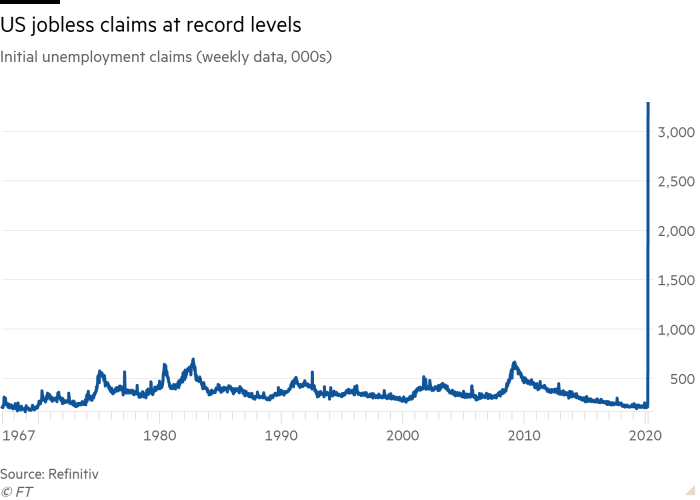What did Donald Trump do today?
He figured out that a disease that will kill hundreds of thousands of Americans is not the flu.
At today's installment of the coronavirus task force briefing, an event that has become a sort of substitute campaign rally for Trump, he did something shocking: he attacked "a lot of people" who, he claimed, thought that COVID-19 was like seasonal influenza.
"But it's not the flu," Trump said. "It's vicious."
Trump is correct: as doctors and disease experts have been saying for months, COVID-19 is far more contagious and far more deadly than the flu.
The statement is noteworthy, of course, because while Trump was still in denial about the need to prepare for an outbreak in the United States, he routinely compared it to the flu.
February 26: At a press conference, Trump dismissed concerns about the spread of COVID-19 to the U.S. by saying, "This is a flu. This is like a flu." He added:
You don't want to see panic because there's no reason to be panicked about it.But when I mentioned the flu, I said - actually, I asked the various doctors. I said, "Is this just like flu?" Because people die from the flu. And this is very unusual. And it is a little bit different, but in some ways it's easier and in some ways it's a little bit tougher.But we have it so well under control. I mean, we really have done a very good job.
February 27: On the same day that Trump dismissed the CDC's conclusion that an outbreak in the United States was "inevitable" ("Well, I don't think it's inevitable"), Trump fielded a question about how Americans should protect themselves. He responded by joking about washing his hands, and said, "You know, you do certain things, that you do when you have the flu. I mean, view this the same as the flu."
March 4: Trump said that people who got the "corona flu" and weren't seriously sickened by it shouldn't be counted in the statistics. Trump didn't seem to know that those people could also pass it on to other people who could become seriously ill or die.
Now, this is just my hunch, and — but based on a lot of conversations with a lot of people that do this, because a lot of people will have this, and it’s very mild. They will get better very rapidly. They don’t even see a doctor. They don’t even call a doctor. You never hear about those people. So, you can’t put them down in the category of the overall population in terms of this corona flu and — or virus.
March 5: Trump, in a televised meeting with pharmaceutical company executives, appeared to genuinely believe that existing flu vaccines could be used to prevent COVID-19.
March 8: Trump said he was surprised to learn that the flu killed people. (His own grandfather died of it.) He said he was "shocked" at how deadly it was, and contrasted those numbers to COVID-19, which only a handful of Americans had died from at the time.
March 9:
March 15: Trump tried compare COVID-19 to the 2009 H1N1 swine flu outbreak, as a way of attacking his likely Democratic opponent, Joe Biden. (The actual figure of deaths from that outbreak, which was quickly contained, was about 12,500—far fewer than a typical flu season.)
March 24: Trump, still chafing at the political consequences of even a temporary isolation period, compared COVID-19 to the flu during a Fox News interview: "But we've never closed down the country for the flu! So you say to yourself, 'What is this all about?'"
March 24: Trump scolded a reporter who mentioned the disastrous 1918 influenza pandemic, which killed about 675,000 Americans: "Bill, excuse me, just one second. You can’t compare this to 1918 where close to 100 million people died. That was a flu, which — a little different. But that was a flu where if you got it you had a 50/50 chance, or very close, of dying. I think [the current virus's fatality rate is substantially under 1 percent."
In reality, the 1918 flu killed nowhere near 50% of the people infected. The lowest current estimate for the COVID-19 mortality rate is 38% higher than Trump claimed.
March 25: Trump implied that seasonal influenza this year was worse than COVID-19 would be, claiming that the flu claims 50,000 Americans every year. (The actual figure is much lower on average.)
Also today, Trump revised his administration's estimates of the number of American deaths from COVID-19 upward again. The upper bound of what amounts to the best-case scenario is now 240,000.
Why should I care about this?
- This isn't something the President of the United States can afford to be this confused about for this long.














